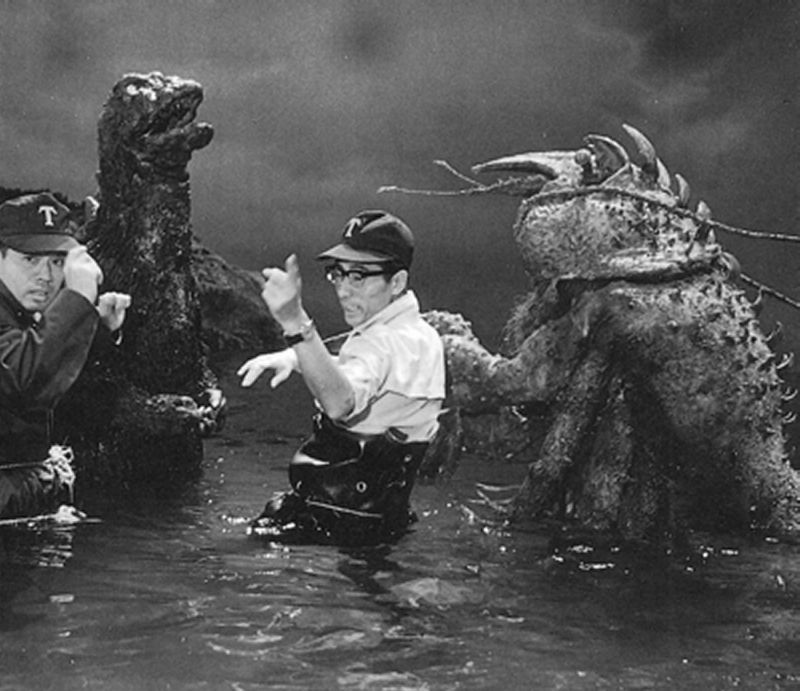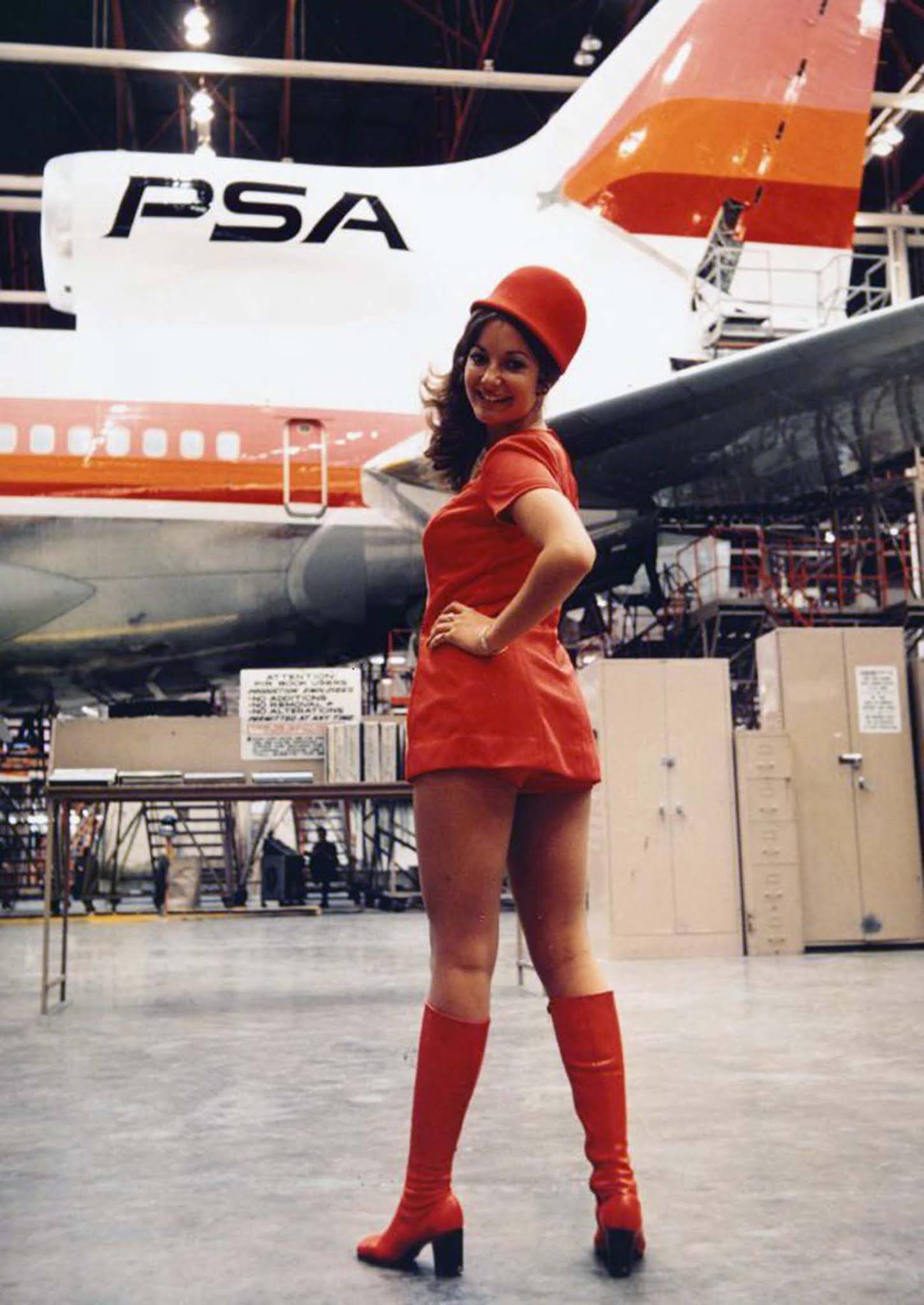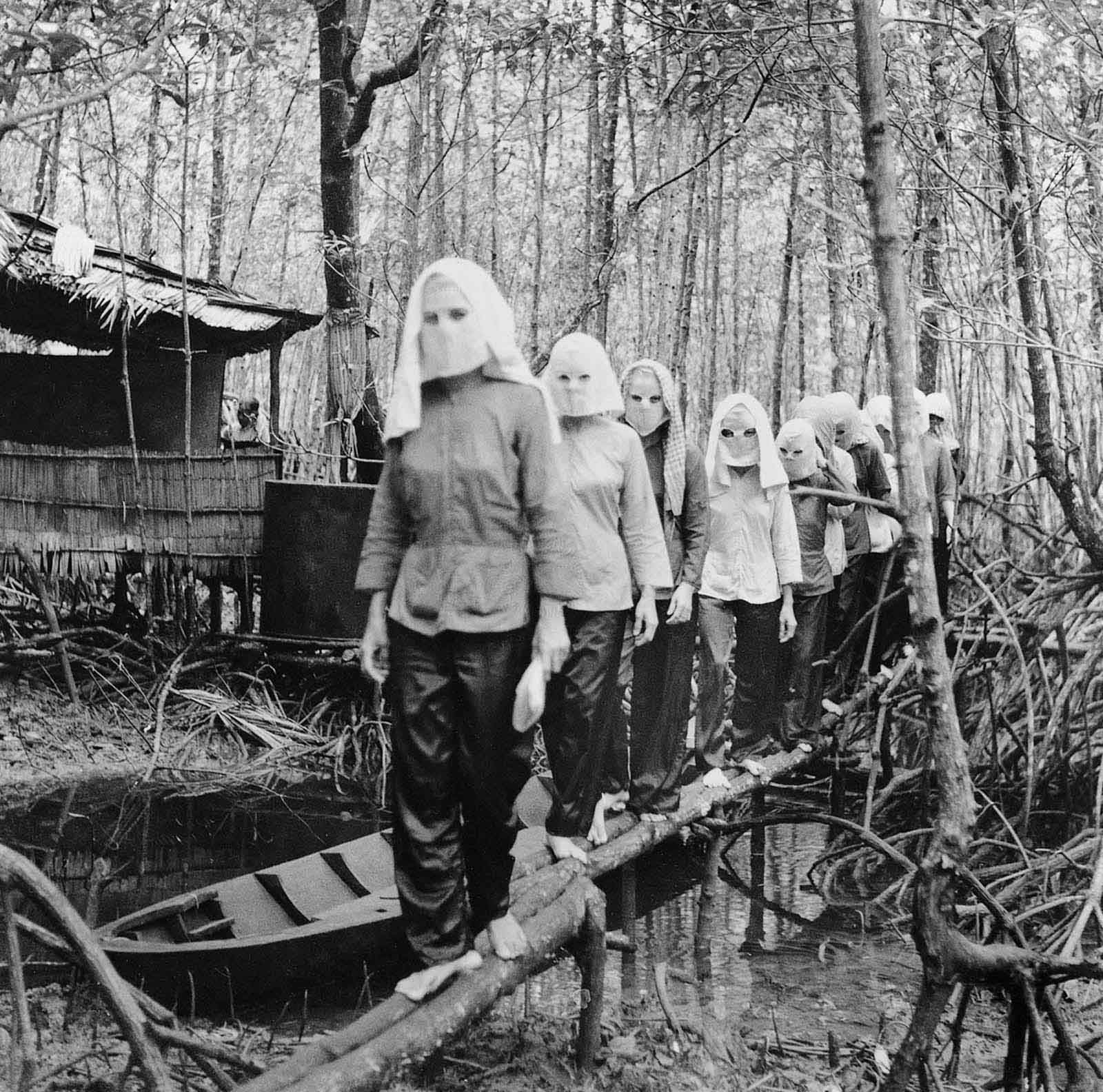
Activists meet in the Nam Can forest, wearing masks to hide their identities from one another in case of capture and interrogation. From here in the mangrove swamps of the Mekong Delta, forwarding images to the North was difficult. “Sometimes the photos were lost or confiscated on the way,” said the photographer. 1972. (Photo by Vo Anh Khanh).
The history of the Vietnam War is one that has been complicated by politics, and it is a history that is still being written and rewritten.
The war involved a fratricidal conflict between the communist Democratic Republic of Vietnam (North Vietnam) and the non-communist Republic of Vietnam (South Vietnam), and extended to neighboring Laos and Cambodia; however, it was also a proxy war in a Cold War contest between the communist bloc and the western bloc.
North Vietnam had massed support of the Soviet Union and China and their satellite states while South Vietnam had the backing of the United States and its allies. The echoes of the war extended well beyond Vietnam and the countries that participated in the conflict.
Vietnam was a transformational event and became an international symbol for the protest movements of the 1960s and 1970s.
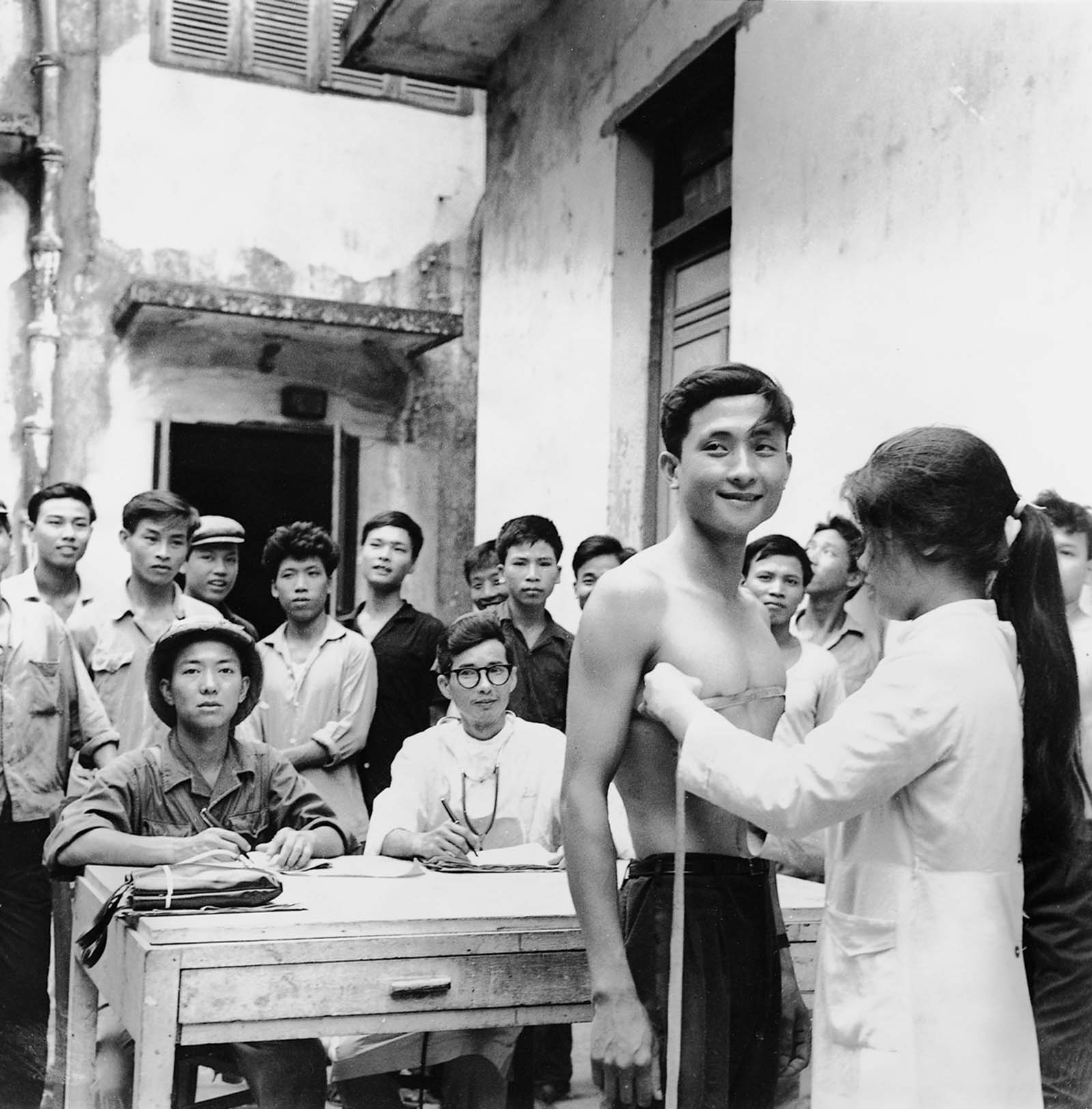
New recruits undergo physical examinations in Haiphong. The North’s volunteer system was transformed into a mandatory system in 1973 when all able-bodied males were drafted. From a corps of around 35,000 men in 1950, the NVA grew to over half a million men by the mid-’70s, a force the U.S. military conceded was one of the finest in the world. July 1967. (Photo by Bao Hanh).
The war had a ripple effect that spread outwards from Vietnam to other countries and continents, an effect that was temporal as well as geographic, reaching not only the wartime generations but also the postwar generations.
The history of the war has been a partial one, underscored by the American dominance of the English-language historiography of the war and the focus on American policies and the American experience of the war, coupled with a mostly negative assessment of South Vietnam.
The so-called first ‘television war’, the Vietnam war was defined and shaped by cameras and the bold photographers behind them.
The pictures collected in this article are part of the photographic book Another Vietnam: Pictures of the War from the Other Side and show the war from the Vietnamese perspective.
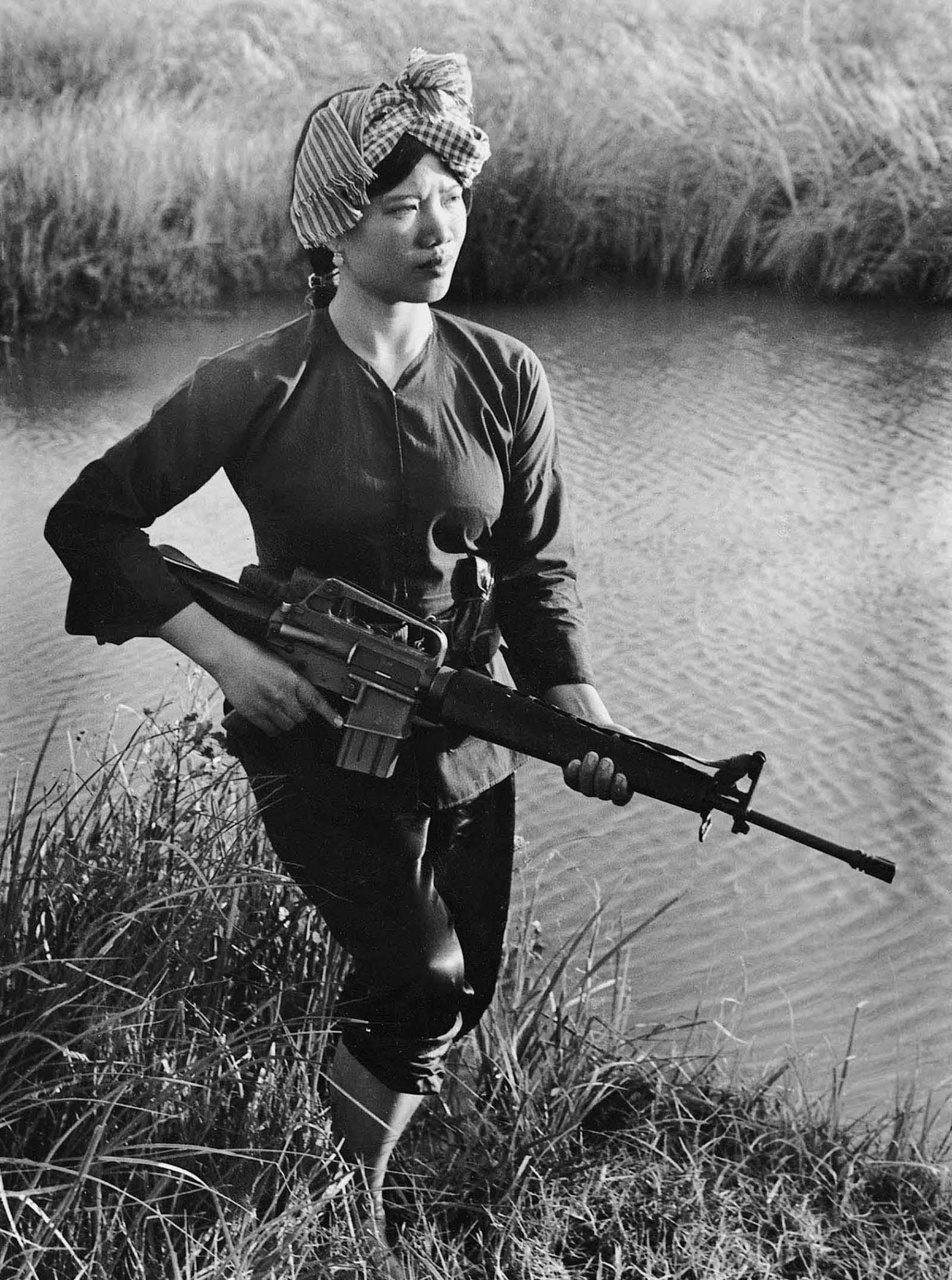
A Viet Cong guerrilla stands guard in the Mekong Delta. “You could find women like her almost everywhere during the war,” said the photographer. “She was only 24 years old but had been widowed twice. Both her husbands were soldiers. I saw her as the embodiment of the ideal guerrilla woman, who’d made great sacrifices for her country.” 1973. (Photo by Le Minh Truong).
The book presents the view of the North Vietnamese combat photographers who documented their people’s 30-year struggle, first against the French and then against the Americans.
These pictures portray a society committed to victory at all costs, they show us courage, drama, resolve, and often, a violent beauty.
While Western photographers had the most modern equipment and facilities, the Vietnamese worked with cumbersome outdated cameras, some dating back to the 1930s. Each roll of film was precious, so scarce that one cameraman shot only 70 pictures in the course of the entire war.
Using home-brewed chemicals, they developed their pictures in the open air or in underground tunnels, under the constant threat of B-52 strikes.
Many of these photographs have been rarely published in Vietnam, let alone in the rest of the world. The book contains one hundred eighty of these unseen photos and it’s definitely worth having in your collection.

A guerrilla in the Mekong Delta paddles through a mangrove forest defoliated by Agent Orange. The Americans denuded the landscape with chemicals to deny cover to the Viet Cong. The photographer was sickened by what he saw, since the Vietnamese regard mangrove forests as bountiful areas for agriculture and fishing. 1970. (Photo by Le Minh Truong).
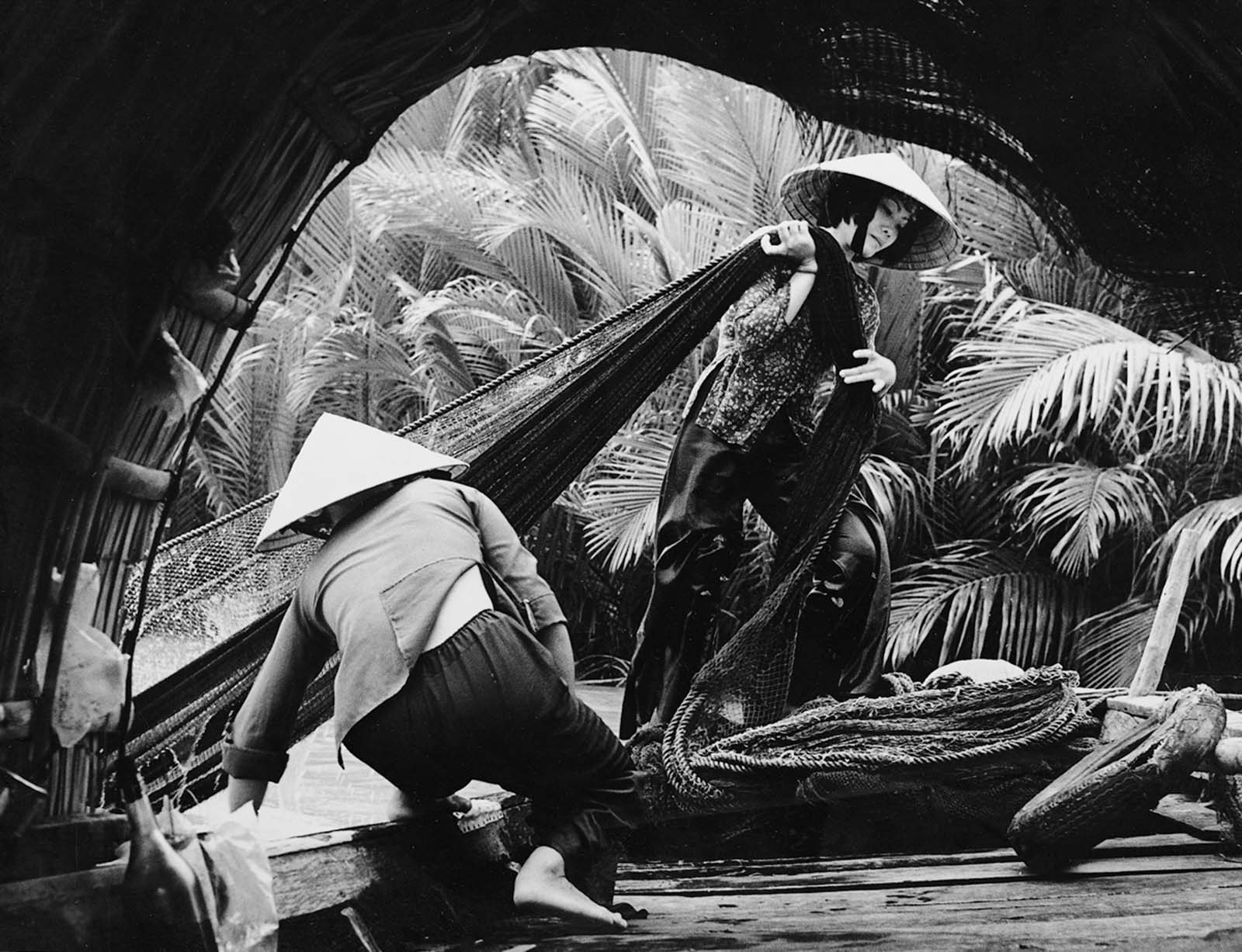
Women haul in heavy fishing nets on the upper branch of the Mekong River, taking over a job usually done exclusively by men. 1974. (Photo by Le Minh Truong).
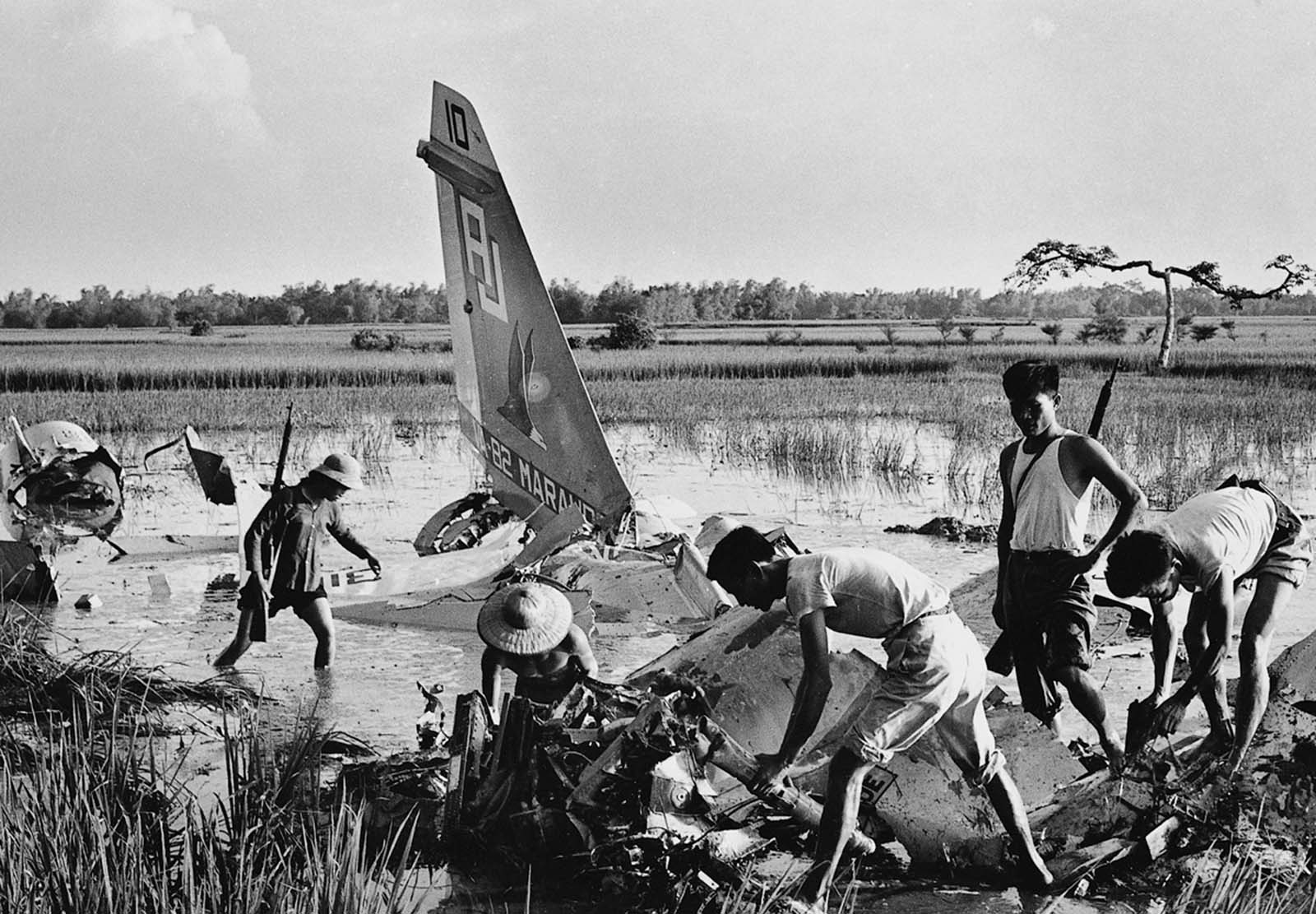
Militia members sort through the wreckage of a downed US Navy plane on the outskirts of Hanoi. The TLV A-7C Corsair aircraft piloted by Lt. Stephen Owen Musselman was downed near Hanoi on Sept. 10, 1972. Lt. Musselman ejected from his aircraft before it crashed. He was MIA until March 1, 1978, when the Secretary of the Navy approved a Presumptive Finding of Death. On July 7, 1981, remains which were confirmed to be his were returned to the United States by the government of Vietnam. (Photo by Doan Cong Tinh).
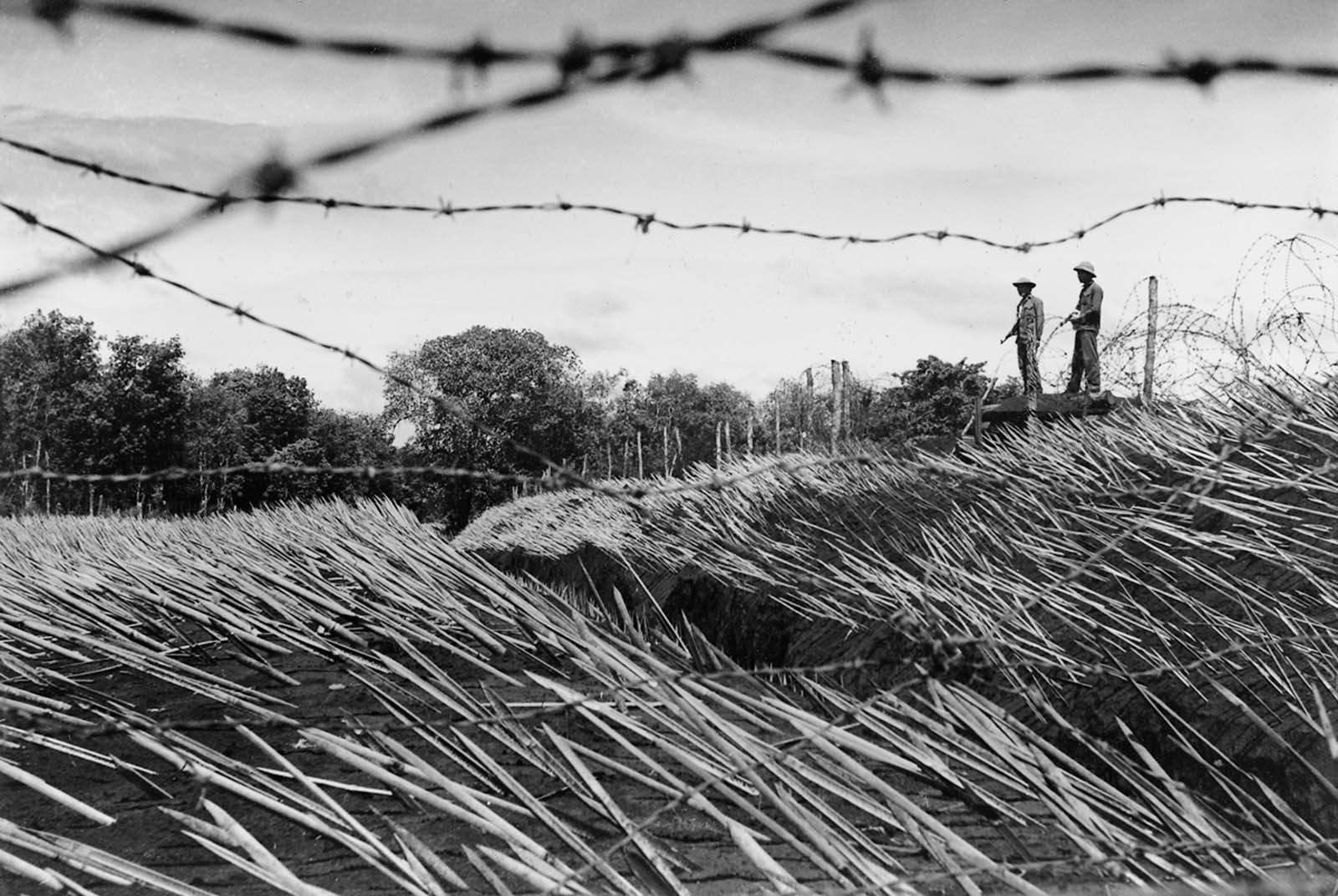
Guerillas guard an outpost on the Vietnam-Cambodia border protected by poisoned bamboo punji stakes. Sharpened then hardened with fire, punji stakes were often hidden where enemy soldiers would step on them. Such booby traps were meant to wound, not kill, because wounded soldiers slowed down their unit, and medevacs gave away its position. 1972. (Photo by Le Minh Truong).
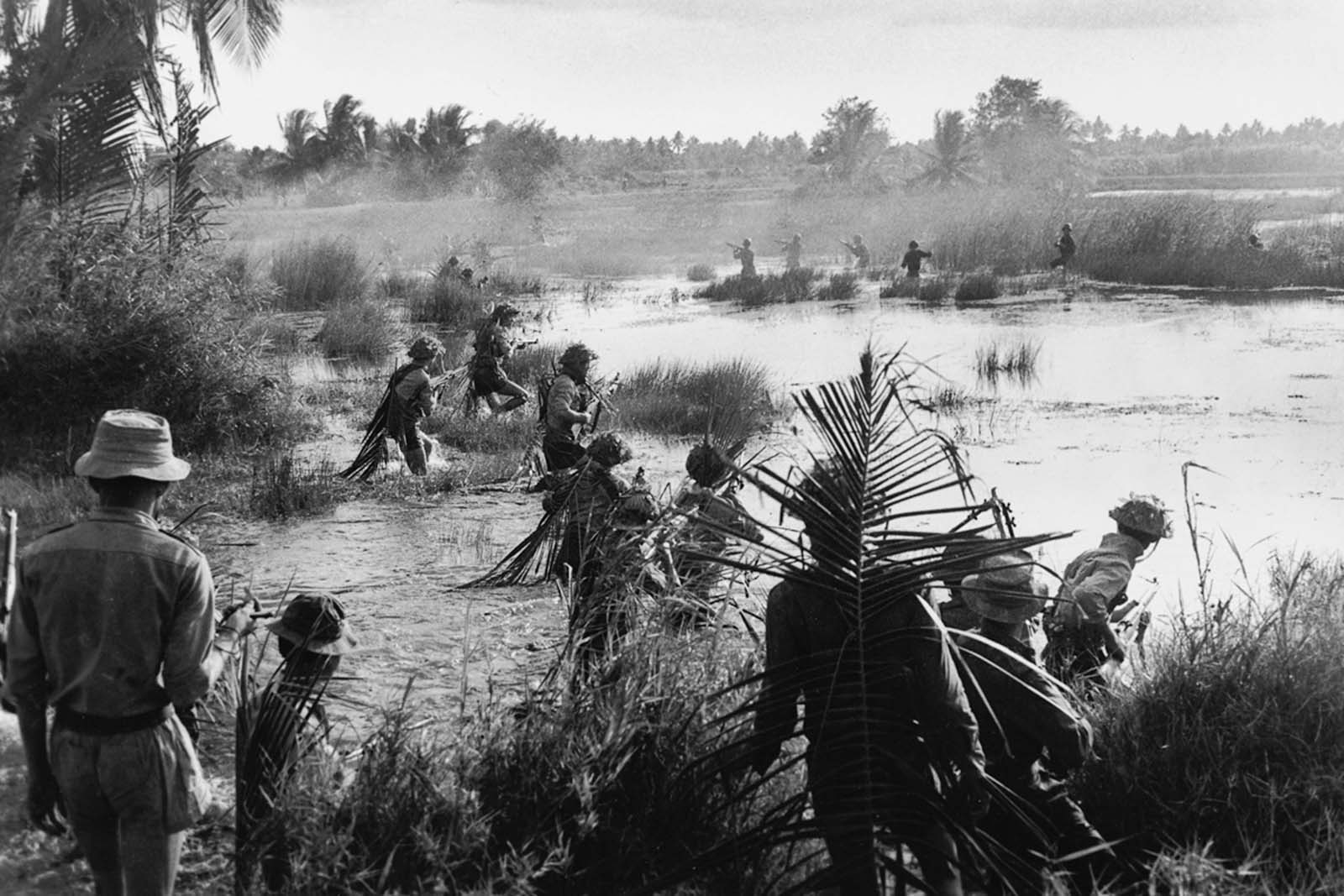
Viet Cong meet the enemy face-to-face, most likely in the Mekong Delta or Plain of Reeds. This rare image shows both sides in combat, ARVN soldiers at the top and Viet Cong in the foreground. The VC have flanked the enemy at left and right, which likely meant the ARVN unit was wiped out. (Photo by Hoang Mai).
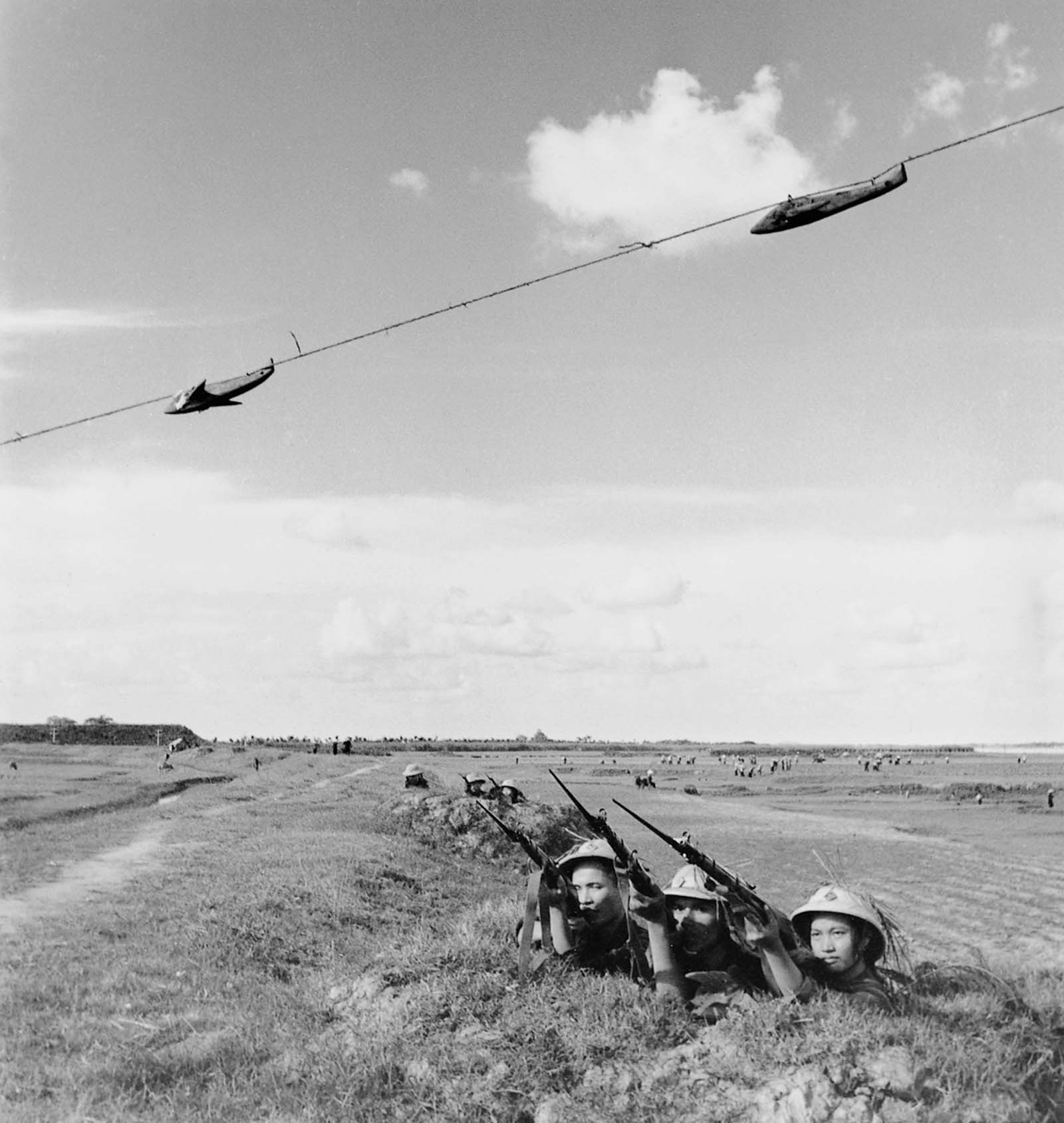
Using overhead targets, a militia company practices firing ahead of speeding aircraft in Thanh Tri. Even using antiquated WWII rifles such as these, the Vietnamese were able to cripple or down many U.S. aircraft. This militia group, Company 6 of the Yen My Commune, earned the title of “Excellent Militia” three years in a row. 1965. (Photo by Minh Dao).

Construction workers discuss repairs of the bombed-out Ham Rong Bridge, in central North Vietnam. The only route across the Ma River for heavy trucks and machinery, the bridge was heavily defended, and several U.S. planes were shot down nearby. An American MIA search team found pilot remains there. 1973.
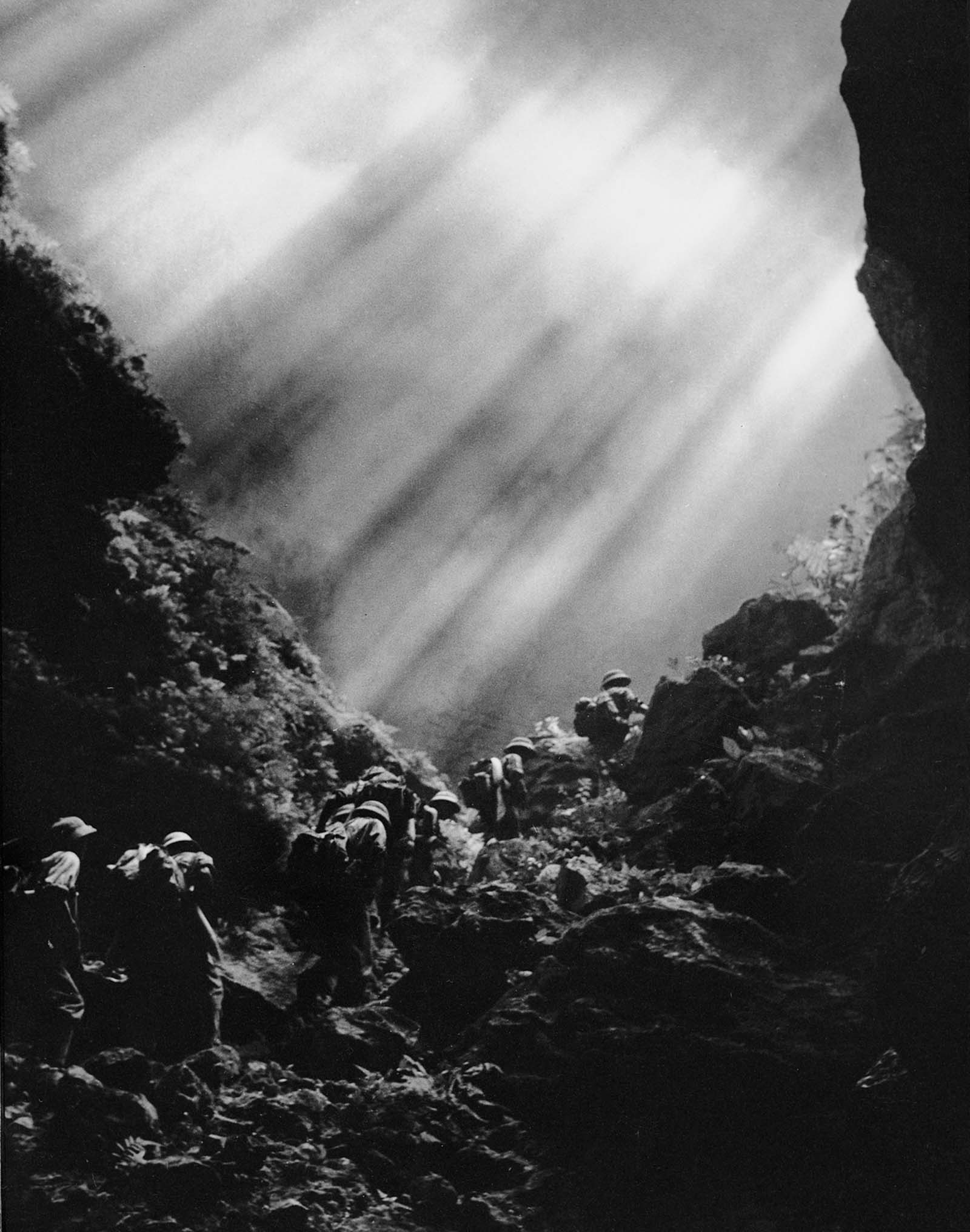
Troops walk the Ho Chi Minh Trail in the Truong Son Mountains, which form the 750-mile-long spine of Vietnam, stretching along much of the country’s western border. To the soldiers of the North, the Ho Chi Minh Trail was known as the Truong Son Road. 1966. (Photo by Le Minh Truong).
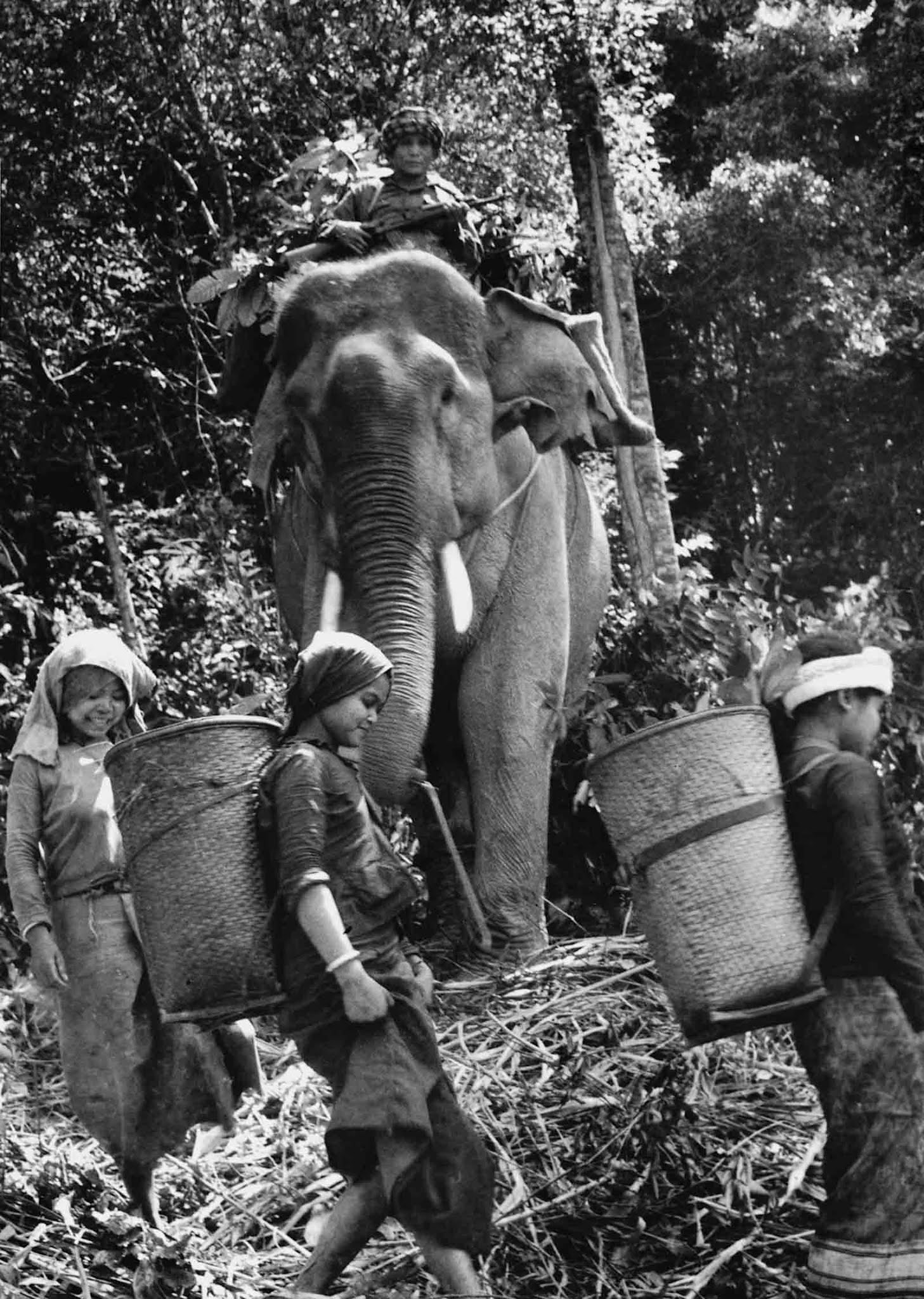
Laotian guerrillas haul supplies by elephant and foot to NVA troops near Route 9 in southern Laos during South Vietnam’s attempted interdiction of the trail. The invasion, Operation Lam Son 719, was intended to test ARVN’s ability as U.S. support was winding down. It proved disastrous, with Southern troops fleeing in panic. 1971. (Photo by Doan Cong Tinh).
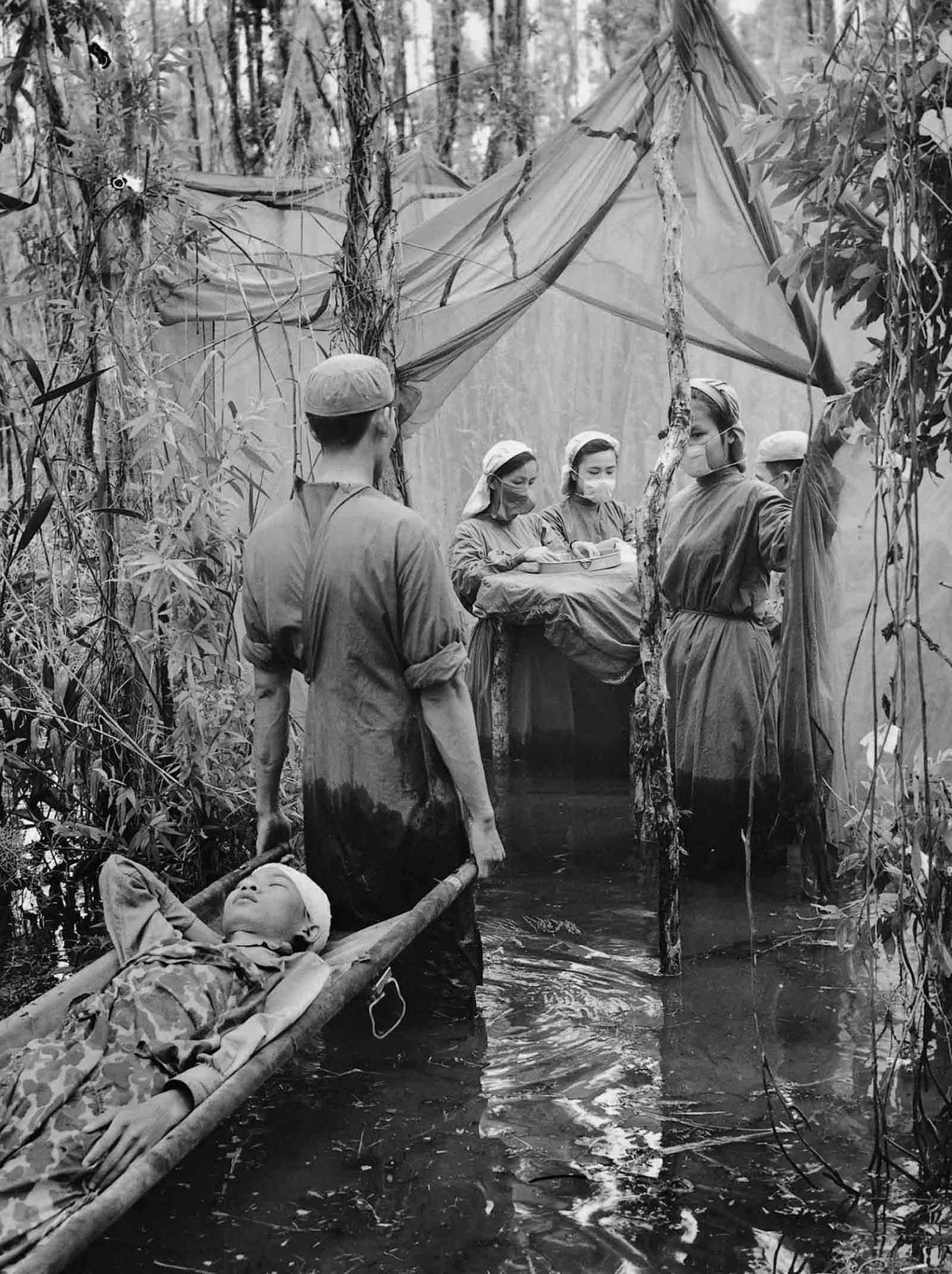
A victim of American bombing, ethnic Cambodian guerrilla Danh Son Huol is carried to an improvised operating room in a mangrove swamp on the Ca Mau Peninsula. This scene was an actual medical situation, not a publicity setup. The photographer, however, considered the image unexceptional and never printed it. 1970. (Photo by Vo Anh Khanh).
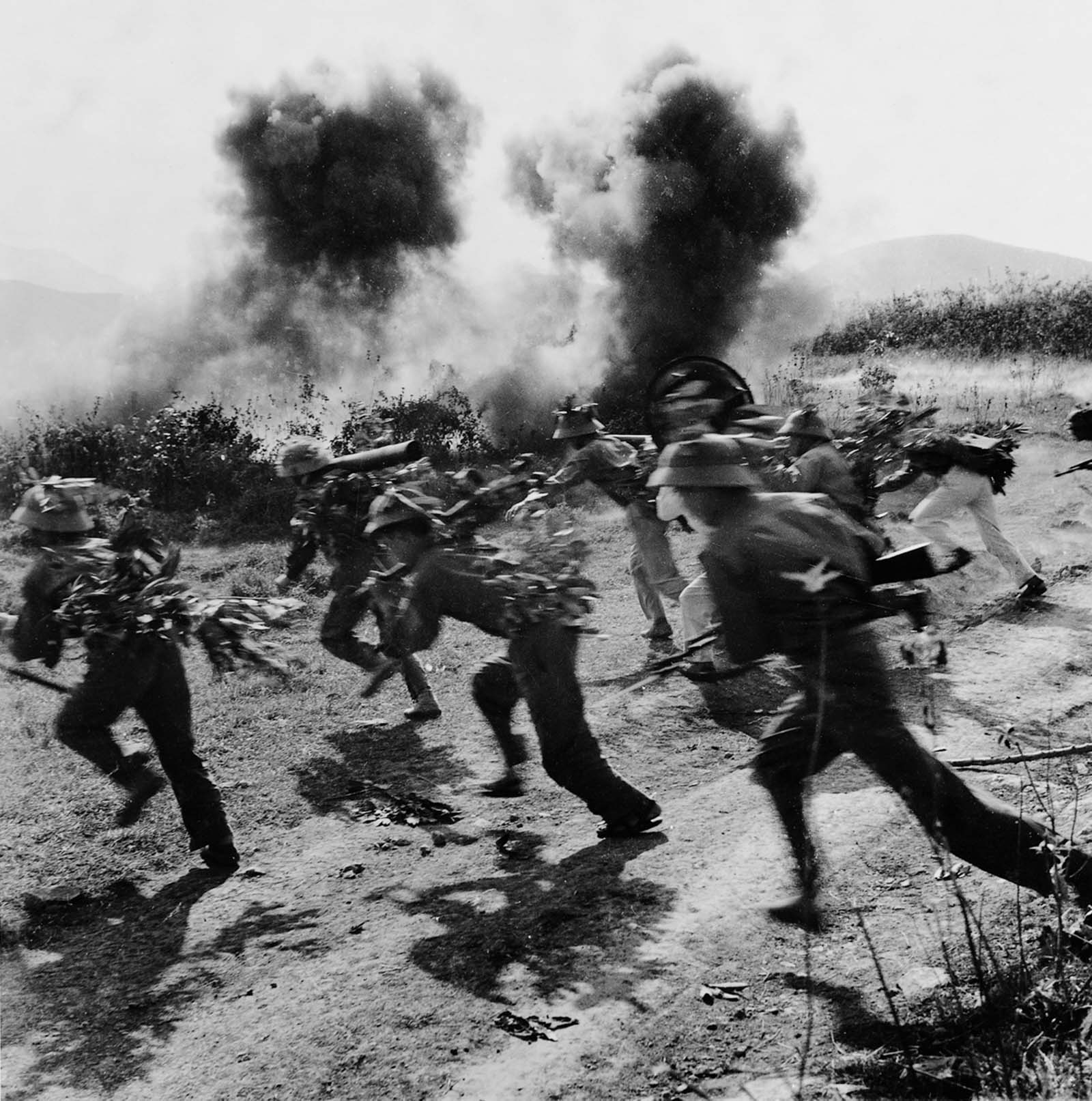
NVA soldiers dash across the open ground near strategic Highway 9 in southern Laos during Operation Lam Son 719, the South’s failed attempt to cut the Ho Chi Minh Trail. (Photo by Nguyen Dinh UU).
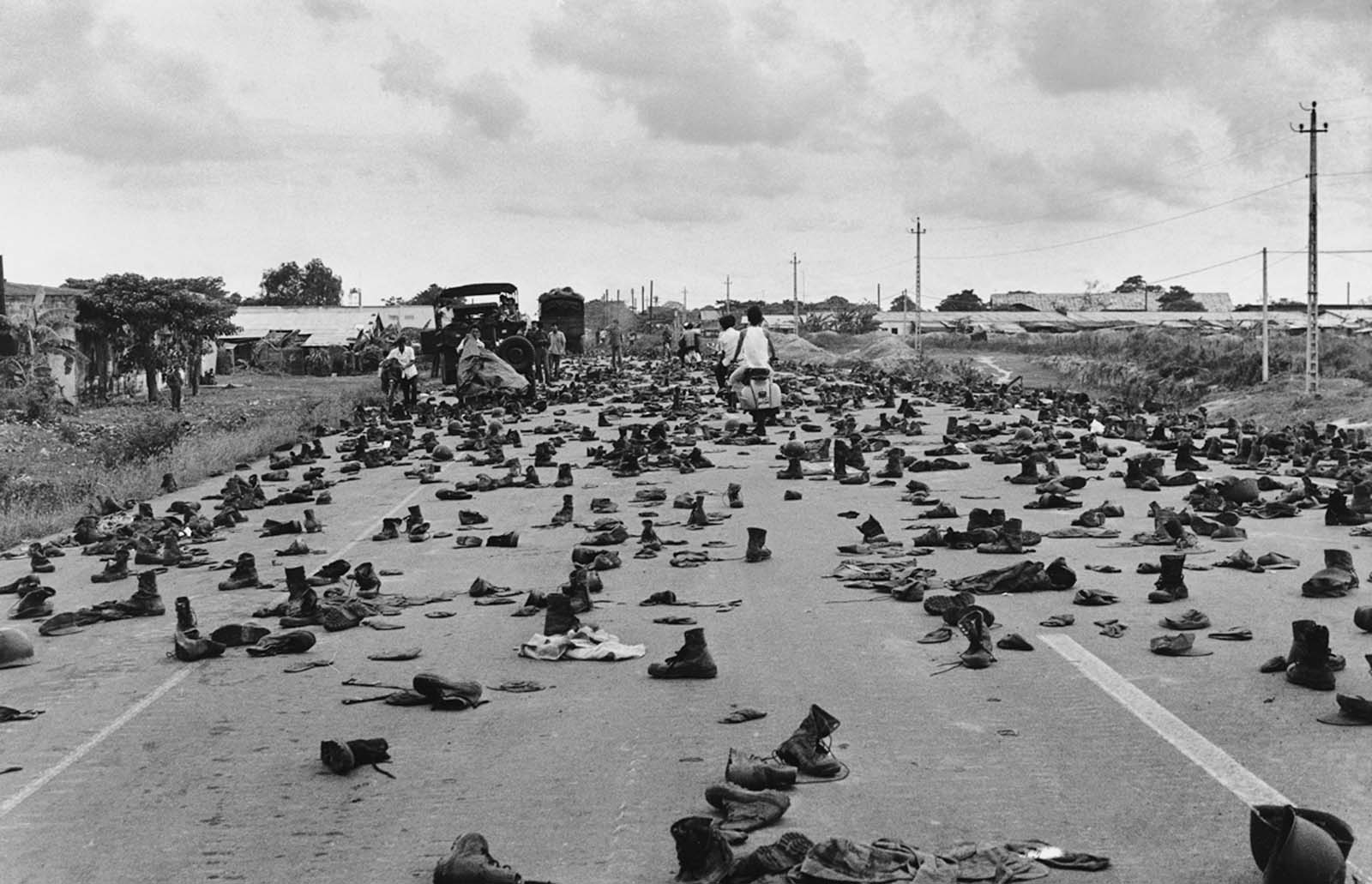
Combat boots litter the road on the outskirts of Saigon, abandoned by ARVN soldiers who shed their uniforms to hide their status. “I’ll never forget the shoes and the loud ‘thump, thump, thump’ sound as we drove over them,” recalled the photographer. “Decades of war were over and we finally had peace.” 1975. (Photo by Duong Thanh).

Elders from North and South embrace, having lived to see Vietnam reunited and unoccupied by foreign powers. 1975. (Photo by Vo Anh Khanh).
(Photo credit: National Geographic Books / Another Vietnam: Pictures of the War from the Other Side).
